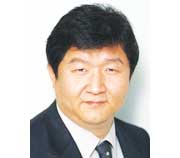I have decided to write a couple of columns regarding what I think should be the priority list for President-elect Park Geun-hye.
Topping my list is the introduction of a Korean-language learning program a la ESL (English as a second language) or JSL (Japanese as a second language).
I promised anonymity to a foreign diplomat who spoke during a recent dinner on the need to launch Korean as a second language courses as part of our public school system.
Here is what he said.
“In the United States, our children took an ESL class in a public school where they could learn English from a specialist teacher in direct contact with native-speaking students.
By the time they left the school, my kids spoke English fluently and developed a love for their adopted nation,” he said. The diplomat added that he spent virtually nothing to support his children during their time at the school. “One has to pay $15,000 per year for one child. I had three, which made for $45,000 in tuition alone.”
During a one-year stint in Austin, Texas, in 2004, I also had two children attending a U.S. middle school. My sons were ESL students and both of them loved the teacher, named Ms. Zion. My experience was not much different from that of my diplomat friend. During their short stay, they learned English and loved America to the point of becoming reluctant to come back to Korea.
My friend’s three children are grown up now, so even if KSL were to be adopted, it wouldn’t benefit them.
“It is not asking Korea to set up KSL classes in every school,” he said. “Open them in areas where many foreigners live.”
If he was the first to talk about the lack of accessibility to public schools by foreigners in Korea, I would have ignored it.
But not long ago, another diplomat also spoke regarding his reservations about bringing his kids to Korea out of fear of high tuition fees at international schools, a problem which deserves another column to address it.
Back to KSL and there are a couple of reasons that makes now the right time for it.
“Hallyu,” or the Korean wave, tops the list.
The world has begun to take interest in things Korea because of K-pop, whose potential has been fully shown by Psy’s “Gangnam Style.” It is not just one Psy song but an array of dramas, movies and other cultural products that made the song a global hit.
Prior to K-pop, Korean-speaking foreigners were seen as an object of curiosity. An awkward attempt by foreigners to speak the language was greeted with a barrage of encouraging giggles by Koreans surrounding them.
Not long ago, an obscure tribe from a faraway land made big news when it was said to have adopted “hangeul” or the Korean alphabet to put their language into a written form. It was taken as stamp of recognition for our cultural excellence.
Nowadays, it is not hard to encounter foreigners irrespective of their nationalities who can speak and write Korean better than Koreans, to speak with a bit of hyperbole.
This means there is a need to tap that rising interest by foreigners in learning Korean. One can learn Korean from books, at hagwon or private learning institutes, and on television or from Korean friends. Offering KSL as part of regular schools’ curricula would likely help turn a Korean-learning experience into a Korea-learning one.
Currently, the let-foreigners-learn-Korean policy is focused abroad as the government aims at increasing the number of state-sponsored institutes for learning Korean overseas.
This policy should be sustained and expanded but more emphasis should be made domestically because of the influx of immigrants and other foreigners who are here to stay long term.
A look at factories in industrial complexes and the composition of rural families testifies to the multicultural society we are living in. Multiracial children born to one Korean parent and one from another country are nothing out of the ordinary nowadays. But they are often left to their own devices, when it comes to learning Korean. That is where KSL can be used to help smooth their adjustment to school life.
Forcing them to learn Korean without adequate systemic help is detrimental to the national interest because the better they can communicate in the language of the land, the more productive members of society they can be.
It would be best to see the introduction of KSL as one more way of quickening our globalization, fostering a greater global family who can appreciate things Korean and speak on our behalf.
The U.S. and Japan may have started language-learning programs for non-natives as part of public diplomacy but now they are integral parts of assimilating an inevitable influx of people from outside their traditional borderlines.
When all things are considered ― high global interest in Korea and our changing demographics in particular ― I can’t help pushing KSL to the attention of the new government. If it is adopted, the credit should go to the diplomat I met over dinner Monday night.



